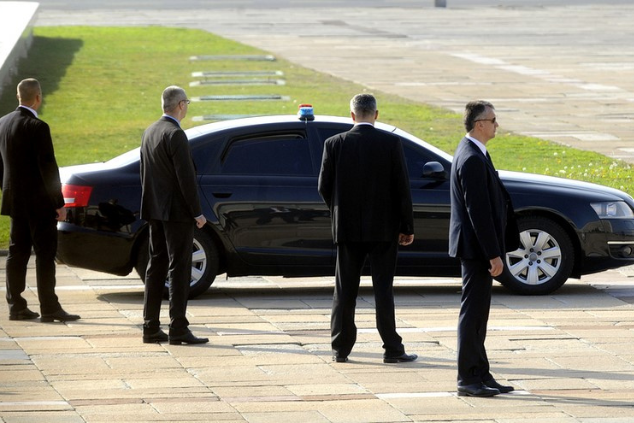From celebrities and corporate executives to politicians and diplomats, the close protection team works diligently behind the scenes to create a protective shield around their clients. This article offers an in-depth exploration of a typical day in the life of a close protection team, shedding light on their responsibilities, challenges, and the importance of their role in executive protection.
Close protection teams are highly specialized professionals trained to provide personal security for their clients, called Principals. Their primary objective is to mitigate risks and protect clients from threats. Establishing a safe and secure environment for the client is at the core of a close protection team’s function. By constantly monitoring and assessing potential risks, close protection teams can anticipate threats and take preemptive measures to neutralize them. The team relies on their expertise, training, and experience to make critical decisions in high-pressure situations.
Preparing for the Day
Before embarking on their daily assignments, a close protection team invests significant time and effort in meticulous preparation. They begin by conducting thorough risk assessments, evaluating the client’s vulnerabilities, and analyzing potential threats. By understanding the client’s profile, lifestyle, and unique risks they may face, close protection teams can tailor their approach to provide the highest level of security.
Gathering intelligence is an integral part of the preparation process. Close protection teams collect and analyze information from various sources to stay ahead of potential threats. This includes monitoring news reports, social media, and local intelligence networks. By keeping a finger on the pulse of current events, they can proactively adapt their security strategies to changing circumstances.
The close protection team develops a detailed operational plan once the risk assessments and intelligence gathering are complete. This plan outlines specific strategies, procedures, and contingencies for different scenarios that may arise throughout the day. It serves as a roadmap for the team, ensuring everyone is aligned with the objectives and prepared for potential challenges.
Briefings are crucial to effective coordination within the team. Close protection team leaders communicate the operational plan to team members, assigning specific roles and responsibilities. Clear and concise communication is essential for seamless teamwork and the execution of a well-coordinated protection detail.
Starting the Protection Detail
The protection detail begins with securing the client’s residence or accommodation. The close protection team implements access control measures, such as surveillance systems, restricted entry points, and security personnel.
The team goes to great lengths to ensure the Principal’s safety during transportation to ensure secure vehicles. It conducts thorough inspections to detect any potential security breaches or vulnerabilities. From reinforced doors and windows to GPS tracking and communication systems, every aspect of the transportation vehicles is meticulously examined and optimized for security.
Planning secure routes is an integral part of transportation security. Close protection teams consider traffic patterns, potential risks along the route, and emergency evacuation plans. By carefully selecting the most secure and efficient routes, they minimize the chances of encountering potential threats.
Dealing with Unexpected Situations and Contingencies
Close protection teams are well-prepared to handle unexpected situations and contingencies during their protection detail. They have comprehensive emergency response protocols to ensure a swift and effective response. These protocols are developed based on extensive training, simulations, and lessons learned from real-life situations.
Maintaining high security throughout the day requires close protection teams to remain vigilant and proactive. Ongoing threat assessment and situational awareness are essential. Close protection agents continuously monitor their surroundings, assess potential risks, and identify suspicious activities or behaviors. This constant vigilance allows them to detect and respond to threats before they escalate.
Effective communication within the close protection team is crucial for seamless coordination and quick response times. Through encrypted communication devices and established protocols, team members can share critical information, provide updates, and coordinate their actions in real time.
Coordinating with external security and support personnel is another vital aspect of maintaining close protection throughout the day. Close protection teams often collaborate with venue security personnel, law enforcement agencies, and other stakeholders to enhance overall security.
Managing Public Appearances and Events
Close protection teams also play a fundamental role in managing public appearances and events for their Principals. Whether attending public functions, giving speeches, or participating in public engagements, these teams are responsible for maintaining a secure environment.
Crowd control and access management are essential components of managing public appearances. Close protection teams establish cordons, manage entry points, and coordinate with venue security to ensure only authorized individuals can access the client’s vicinity. Maintaining strict control over crowd movements and access minimizes the risk of unauthorized individuals approaching the client.
Implementing venue security measures is a priority for close protection teams. They work closely with venue security personnel to assess and enhance security measures. This may include conducting security sweeps, installing surveillance systems, and implementing protocols for emergency situations. By integrating their expertise with the existing security infrastructure, close protection teams create a layered defense to safeguard their clients.
Screening and assessing event attendees is another aspect of managing public appearances. Close protection teams employ various techniques to identify potential threats or suspicious individuals. This may involve conducting background checks, screening for prohibited items, or using advanced technology for threat detection.
Responding to security incidents or disruptions requires close protection teams to act swiftly and decisively. Their training and experience equip them with the necessary skills to handle various scenarios, ranging from minor disruptions to serious security threats. Close protection agents are trained in conflict resolution, self-defense techniques, and crisis management, enabling them to respond effectively and protect their clients in any situation.
Professional Development and Skills Enhancement
Close protection teams understand that ongoing professional development and skills allow them to stay at the forefront of their field. They continuously seek opportunities for training, certification programs, and skill-building workshops.
Continuous training and certification help close protection professionals refine their skills and stay up-to-date with the latest industry practices. Training programs usually cover a wide range of topics, including risk assessment, emergency response, tactical driving, and first aid. By investing in their professional development, close protection teams can provide their clients with the highest level of service.
Networking and participating in professional associations provide close protection teams valuable opportunities to exchange knowledge, share experiences, and collaborate with industry peers. These networks offer platforms for learning, mentoring, and building professional relationships. By actively engaging in the close protection community, professionals can expand their horizons and stay connected to the latest advancements in the field.
In conclusion, a day in the life of a close protection team is characterized by meticulous planning, proactive risk management, and unwavering dedication to their client’s safety. These highly skilled professionals operate behind the scenes, working tirelessly to create a secure environment for high-profile individuals. Aspiring professionals looking to enter the executive protection industry and industry veterans seeking to boost their skills should recognize the importance of teamwork, ongoing skill development, and a commitment to excellence. By embracing these principles, they can embark on a fulfilling career path that safeguards lives and enables others to thrive in an ever-changing world.
If you are looking to start your career in Executive Protection, click on the link below and check out how EPI can help you.


